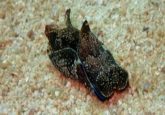How smells can linger in your memory

Scents are not only processed by the olfactory center, but also by the brain’s reward and aversion systems, explaining how scents can take on meaning.
Researchers from the Department of Neurophysiology, Ruhr-Universität Bochum (Germany) in collaboration with the German Center for Neurodegenerative Diseases (Bonn, Germany) examined the processing of scents in the rodent brain. From this investigation they have discovered that olfactory cortex structures work alongside the limbic system, providing insight into the behavioral changes we make in response to certain odors.
“We already knew that there is a connection between the olfactory bulb and the piriform cortex, a part of the olfactory cortex, in the perception of scents,” explained lead author Christina Strauch (Ruhr-Universität Bochum). “But our goal was to go deeper into the brain structures and find out which regions we had underestimated or overlooked until now.”
By using electrophysiological stimulation of the olfactory bulbs of test animals, the activity in the olfactory cortex was then analyzed by fMRI to obtain a detailed picture of the neuronal structures that responded to the stimulation of the olfactory bulb. Brain regions outside the olfactory system were identified that may contribute to olfactory information processing and storage.
Following this approach, the team then utilized fluorescence in situ hybridization to assess the role of the highly responsive structures in somatic gene encoding after information storage. Those neurons that engaged in information encoding are presumed to enable long-term retention of the experience.
“So far, only a few studies on olfactory perception have analyzed regions outside the olfactory bulb and olfactory cortex regions in rodents,” added co-author Denise Manahan-Vaughan (Ruhr-Universität Bochum). “It is still not completely understood how olfactory memories are formed. Our goal was to clarify to what extent brain structures that aren’t part of the olfactory system are involved in olfactory memory formation.”
Using the same method, regions of the olfactory cortex have been reported to exhibit odor-specific changes in the expression of various immediate early genes. Olfactory bulb stimulation led to altered gene activity in the olfactory cortex and its piriform cortex processing odor information, as well as the limbic cortex – which is responsible for the processing of emotions and valence determination.
“The involvement of these non-olfactory structures probably plays a key role in the storage of olfactory experiences,” interpreted Strauch. “We deduce from this that rodents quickly categorize perceived scents as pleasant or unpleasant while smelling them.”
Overall, the results prove that the olfactory system works closely with the brain’s reward and aversion systems in both learning and memory formation. These findings, along with the anatomical wiring of the motor, reward-modulating, and limbic structures provide insight into how this process may determine behavioral responses to odor experience.
Manahan-Vaughan concluded, “The study provides us an additional theoretical basis for understanding why the sense of smell plays such a unique role in the formation and retrieval of memories.”





